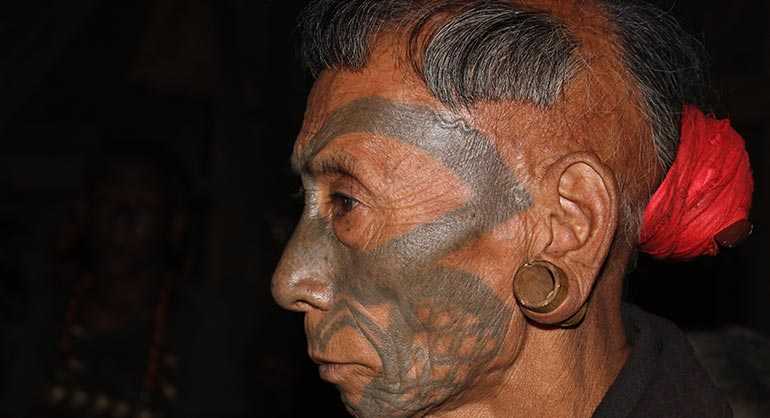Bon-choe, the Bhutanese name for Animism predates Buddhism. In simple terms Animism means worship of nature. However, Bon-choe draws some negative undertones whenever mentioned since the extreme primitive practice involved elements of blood sacrifice called Mar-choe. With the onset of Buddhism in the 7th century, effigy rituals called Kar-choe replaced the bloody sacrifices. The Bhutanese way of life is deeply rooted in animist rituals which we are unaware as the Buddhist and Hindu philosophies have been high-flying in the present. The animist rituals have always been a prerequisite to Bhutan’s social and cultural heritage and should not be brushed aside as some rustic mumbo jumbo. One can view them as a spiritual person revering a communion with the unseen, while a rationalist may see it as an ecological necessity. It can be anyone’s choice.
In Bhutan, the animist traditions helped a lot in the preservation of the environment and culture. A core animist belief is that human beings are just visitors on this planet and that the permanent owners are the guardian spirits. To live in harmony on this planet, the humans must pay their respects to these guardians. To name a few; Tso-mems (water spirits) rule the water world and Dra-tsens (cliff spirits) own the rocky cliffs. Likewise, Jomo is the guardian of the fauna and Mems of flora; Gang-tsens are the spirits of the ridges and Lhung-tsens are wind spirits. There are others such as the Gyalpos (kings), Nyelpos (hosts) and subterranean guardians like Lu, Drelpo, Sa-dhag and many more.
In Bhutan Dralha Solnee is an animist ritual where the spirit (Dralha) is propitiated. Some Dralha verses are filled with earthly wisdom that delves into understanding the formation of life itself. One of such verses explains the fundamental understanding of the origin of life: the belief that the primordial body was formed from the fusion of Fire, Wind, Water and Earth. Once the body was created, the soul (dralha as per animist belief) took refuge in it. Such is the animist wisdom from ancient times that it still runs in parallel with the modern scientific perceptive.
From several centuries there have been attempts to eradicate animism from Bhutan. But today’s younger generation is lucky as they can choose to view animism as a spiritual union or as an ecological bond. This seems interesting because it is a global philosophy. My own journey into understanding animism within the frontiers of ecology has been great. I call this my journey into the deep ecology. I look at all the animist rituals as a communicative tool for understanding the soul of Mother Earth and to create harmony and balance on this planet. Comprehending animism this way has helped me preserve this ancient belief system in this electronic world. Just like Buddhism has become a way of life for many of my friends, animism has become one for me. It is an individual’s realization and my understanding on this has opened a new chapter in my life which I am documenting in a private journal titled “The Dawn of my Realization”.





